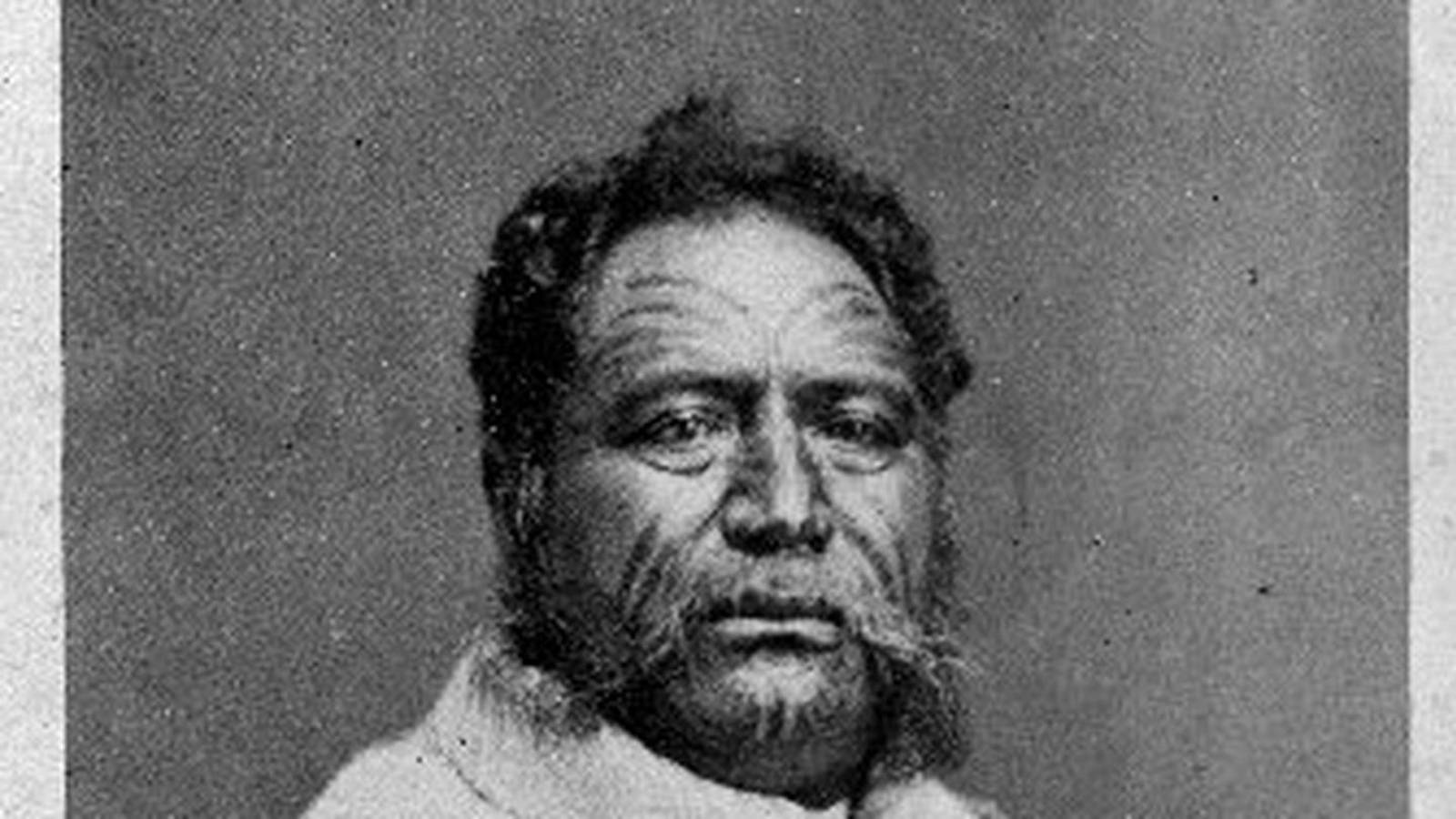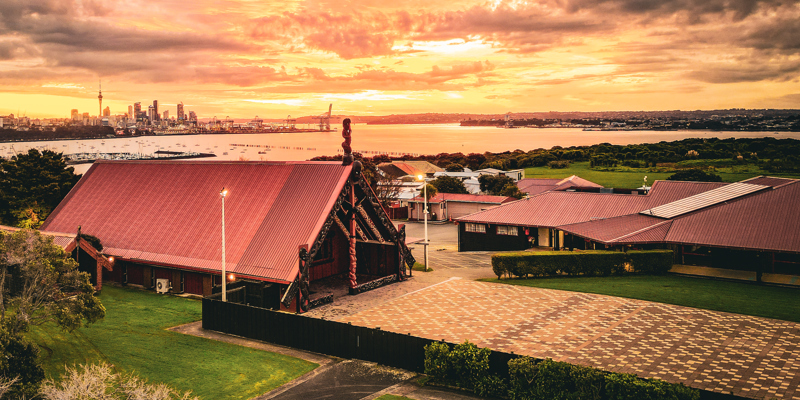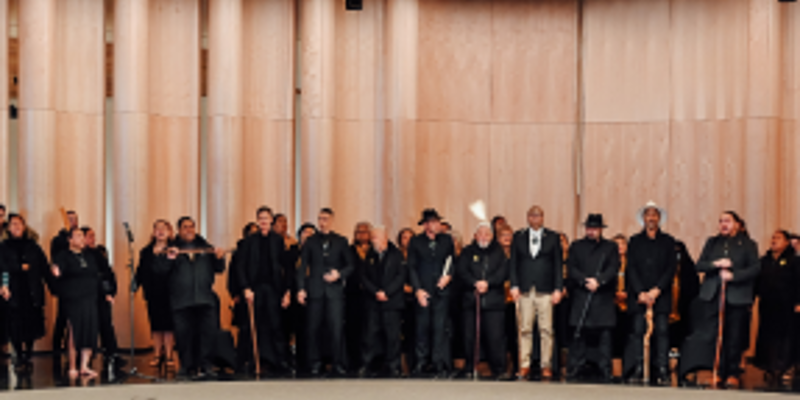Pāora Tūhaere
He tupunaPāora Tūhaere
I whānau mai a Pāora Tūhaere i te takiwā o te tau 1825. Ko Atareta Tuha rāua ko Whanararei ōna mātua, ka mutu, he tuahine tōna whaea ki a Apihai Te Kawau.
Ka hau tana rongo hei kaiwhakatau i te riri, erangi anō hei toa whawhai. I a ia e rangatahi ana ka whai a Tūhaere i te hāhi mihinare, mea rawa ake, ka riro i a ia te ingoa a Pāora. Ka mate ia ki te whakatō i te rongopai ki ngā hui o te iwi, me te mōhio hoki, ko te maungārongo te mea nui ki a ia. Ko Tūhaere tētahi o ngā rangatira i whakaae ki te hokotanga o ngā whenua. Ko te tikanga ia, ka whakatahangia he 10 paihēneti o aua hokonga whenua hei pūtea e tū ai ngā kura me ngā hōhipera mō te Māori.

Heoi, i taua wā tonu ka piki te reo whakahē o ngā iwi ki te mahi hoko whenua, ka mutu, ko tā te Kīngatanga ki te motu whānui kia puritia tonutia ngā whenua Māori. I te tau 1860, i tū ai te hui nui o Kohimaramara. Ko tōna 200 rangatira i tae atu ki taua hui rā matapaki ai taupatupatu ai i ngā take nui o te wā me te Tiriti o Waitangi. I puta te tautoko a te whakaminenga ki te karauna, manohi anō, kakawa ana te whakahē a Tūhaere i te Kīngitanga me ana wero ki te kāwanatanga.
I te tau 1863 i hoko a Tūhaere i tētahi rewa rua ko Wikitōria tōna ingoa. Ko tana hiahia ko ia hei kaihokohoko ki ngā moutere o Te Moana-nui-a-Kiwa. Rite tonu tana hāereere atu ki ngā moutere rā me te aha. Ka kaingākau ia ki aua wāhi. I te matenga o Te Kawau i te tau 1869, ka riro i a Tūhaere te mana, ā, ko ia hei rangatira mō ngā hapū o Orākei. He mōhio nōna ki ngā ture me ngā tukanga a te kāwanatanga i pai ai tana noho ki ngā momo kōmiti o te wā. Ko Tūhaere tētahi o ngā kaitiaki tekau mā toru o ngā whenua ki Orākei. Ka mutu, ko tana hiahia kia noho tapu ērā whenua hei papakāinga mō te iwi, kei hokona kei ngaro.
Te maha hoki o ngā ture hou i tāmi ai i taua hiahia nui o Tūhaere, me te aha, ka mate ana ia, ka riro i aua kaitiaki te mana o ngā whenua anō nei nō rātou ake te whenua. Kāore i roa, ka riro te whenua. Ko Tupanapana tana wahine tuatahi, he tamahine ki a Te Wharerahi tētahi o ngā taniwha hikuroa o Ngāpuhi. Ko Harata tana wahine tuarua, ā, ko Mere tā rāua tamahine.
E ai kī ngā kōrero, ko tōna 2000 tāngata i tae-ā-tinana ki te tangihanga ki a Tūhaere. Nā Tāwhiao te poroporoaki “ko Tūhaere te mōrehu o te ao kōhatu.” I tanumia ia ki te Urupa i Ōkahu. E rua ngā tuhinga hītoria i tuhia ai e ia mō Ngāti Whātua; ‘History of the Ngati Whatua tribes’ (held in the Auckland Institute and Museum), and ‘A historical narrative concerning the conquest of Kaipara and Tamaki by Ngati-Whatua’ (published in the Journal of the Polynesian Society in 1923).
English Transliteration
Pāora Tūhaere was born about the year 1825. Atareta Tuha and Whanararei were his parents, furthermore, his mother was Apihai Te Kawau’s sister.
Tūhaere was known for his ability to adjudicate tense situations and was not a warrior. While still young, Tūhaere joined the Church of England and not long after received the name Pāora. He was an enthusiastic advocate of Christian teachings at large gatherings, with it being well known that peace was his key objective. Tūhaere was one of the leaders who agreed to the sale of land. It was expected that 10 percent of sales would be put aside as a fund to establish schools and hospitals for Māori.
However, iwi opposition to land sales grew, furthermore, the Kīngitanga was urging Māori to hold onto their lands. The Kohimaramara Conference was held in 1860. Some 200 tribal leaders attended the conference to discuss and debate the Treaty of Waitangi and other relevant issues. The conference supported working alongside the Crown, on the other hand, Tūhaere was livid in his criticism of the Kīngitanga for challenging the Government.
In 1863 Tūhaere purchased a schooner called Victoria. He wanted to enter the trading business to the islands of the Pacific. He frequently visited the islands and grew very fond of those places. Upon the death of Te Kawau in 1869, the mantle of senior leader for the Orākei hapū was passed on to Paora Tūhaere. Because of his knowledge of law and government process, he was appointed to various committees and leadership roles. Tūhaere was one of the thirteen trustees of the Ōrākei block. Furthermore, his desire was for the land to remain inalienable as a home for the people so that it would never be sold. The sheer amount of legislation suffocated the dream, and upon Tūhaere dying, the other Trustees were given the title of individual ownership. Before long, much of the land was sold. Tupanapana his first wife was a daughter of Te Wharerahi, a prominent Ngāpuhi chief. Harata was his second wife and Mere was their daughter.
Some 2000 mourners attended Tūhaere’s funeral. King Tāwhiao said to the gathering “Tūhaere was the last of the old ones.” Tūhaere was buried at Ōkahu Bay. He wrote two essays about the history of Ngāti Whātua; ‘History of the Ngati Whatua tribes’ (held in the Auckland Institute and Museum), and ‘A historical narrative concerning the conquest of Kaipara and Tamaki by Ngati-Whatua’ (published in the Journal of the Polynesian Society in 1923).
Quick Links
Learn more about us
-

Ōrākei Marae
Steeped in history and surround by spectacular views over looking the Waitemata Harbor, Ōrākei Marae is the cultural hub for the people of Ngāti Whātua Ōrākei. Ko Tumutumuwhenua te whare tūpuna. Ko Te Puru o Tāmaki te wharekai. Ko Ōrākei te marae. -

NWO Trust
The purpose of the Trust is to receive, administer, manage, protect and govern the Trust’s assets to ensure the cultural, commercial and social development of Ngāti Whātua Ōrākei for the benefit of it's members. -

Whai Māia
Whai Māia is established as a charitable entity responsible for the social and cultural development of our people. With a focus on whānau outcomes and managing a large number of programmes covering areas such as health, education, small business and employment. -

Whai Rawa
Whai Rawa is the commercial investment company of the Ngāti Whātua Ōrākei group responsible for protecting and growing our commercial assets.